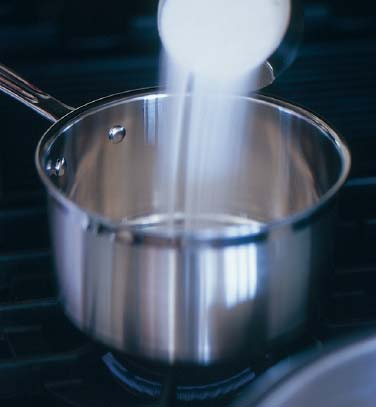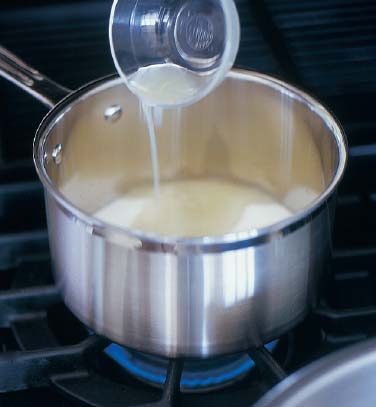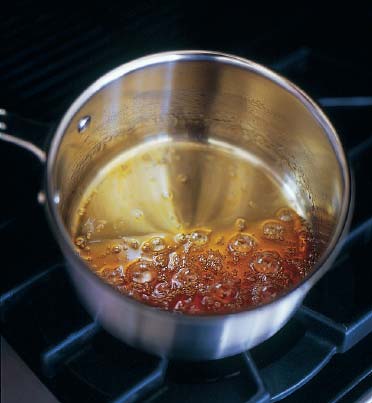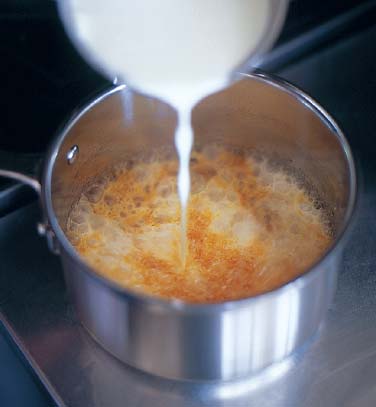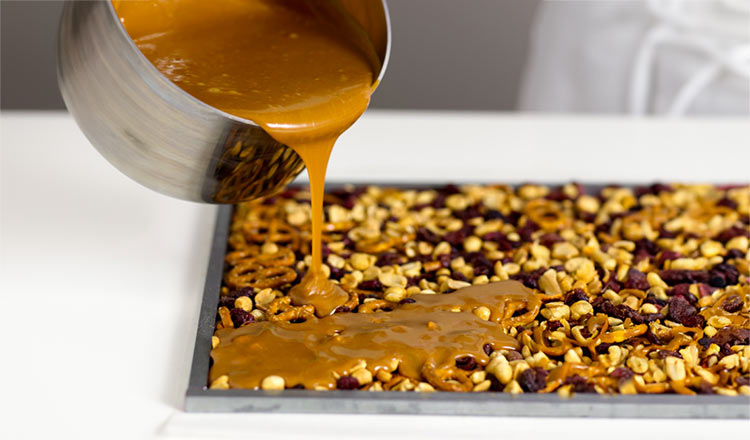Some of our favorite baking and pastry recipes include a sugar syrup cooked to a rich, dark color and a complex flavor. This basic technique can be used to make hard caramelized sugar or to make soft and creamy caramel sauce or candy.
1. Setting Up
Select a heavy pan and dry the inside of the pan thoroughly if needed. Set up an ice bath near the stove before beginning; once sugar starts to brown, it can go from perfect to scorched in no time. If you have an ice bath ready, you can stop the cooking at the precise moment you want.
2. Combining Sugar with Acid
Adding a bit of lemon juice or cider vinegar can boost the flavor of caramel; sugar on its own won’t have the depth of flavor it has when acid is added. The acid also helps discourage crystals from forming as the sugar cooks. Set the pan over low heat and stir slowly with a wooden spoon. You will be able to see and hear when the sugar is melted; stir slowly to prevent the sugar from splashing onto the sides of the pan.
3. Heating Without Stirring
As soon as the sugar melts, stop stirring. Instead, very slowly swirl the pan over the heat to keep the temperature even. As the sugar continues to cook, you may smell a change before you start to see it. The first hints of a golden color will start to appear in the melted sugar. From this point on, the caramel will cook quickly, so watch it closely.
There may be a slight hint of bitterness in the aroma the sugar gives off. When the sugar reaches the color you want, immediately take the pan from the heat. Set the bottom of the pan in the ice water bath for about 20 seconds to quickly lower the pan’s temperature. This keeps the caramel from turning too dark or bitter. The best caramel taste develops when the sugar is cooked until it is a very deep brown. Now you can use the caramel to coat a mold or combine it with other ingredients.
4. Adding Liquids
The caramel will thicken as it cools, so it is important to work quickly at this point. Some recipes require you to combine the caramel with cream or other liquids. The safest way to do this is to bring them to a simmer or boil and turn off the heat under them before you start making the caramel. The warm liquid will foam up immediately as it’s combined with the caramel and it may splatter. Since the sugar is extremely hot, be sure that you keep your face turned slightly away from the pan. Stir gently until the caramel is dissolved; you may need to return the pan to the heat to melt it completely.
